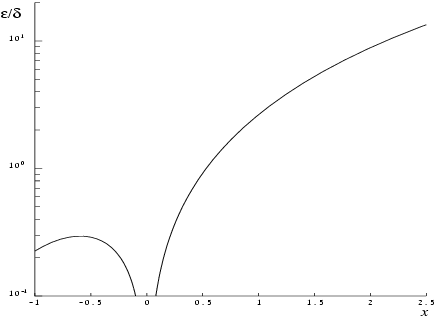S15ADF calculates an approximate value for the complement of the error function
Let
be the root of the equation
(then
). For
the value of
is based on the following rational Chebyshev expansion for
:
where
denotes a rational function of degree
in the numerator and
in the denominator.
For
the value of
is based on a rational Chebyshev expansion for
: for
the value is based on the expansion
and for
it is based on the expansion
For each expansion, the specific values of
and
are selected to be minimal such that the maximum relative error in the expansion is of the order
, where
is the maximum number of decimal digits that can be accurately represented for the particular implementation (see
X02BEF).
For
there is a danger of setting underflow in
(the value of
is given in the
Users' Note for your implementation). For
, S15ADF returns
; for
it returns
.
There are no failure exits from S15ADF. The parameter
IFAIL has been included for consistency with other routines in this chapter.
If
and
are relative errors in the argument and result, respectively, then in principle
That is, the relative error in the argument,
, is amplified by a factor
in the result.
The behaviour of this factor is shown in
Figure 1.
Figure 1
It should be noted that near
this factor behaves as
and hence the accuracy is largely determined by the
machine precision. Also for large negative
, where the factor is
, accuracy is mainly limited by
machine precision. However, for large positive
, the factor becomes
and to an extent relative accuracy is necessarily lost. The absolute accuracy
is given by
so absolute accuracy is guaranteed for all
.
None.
